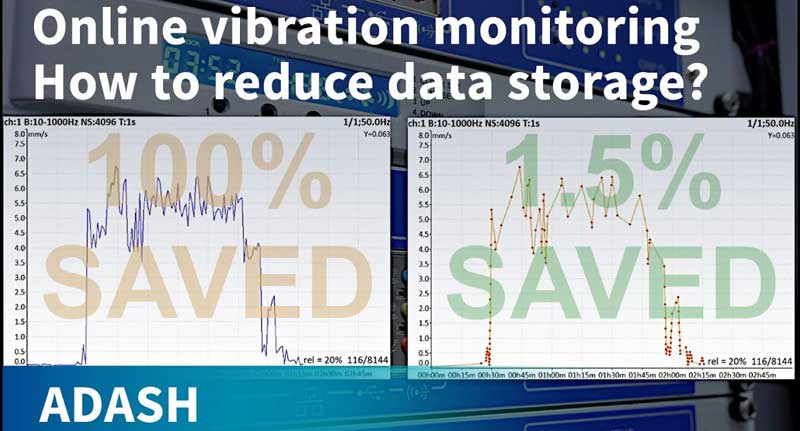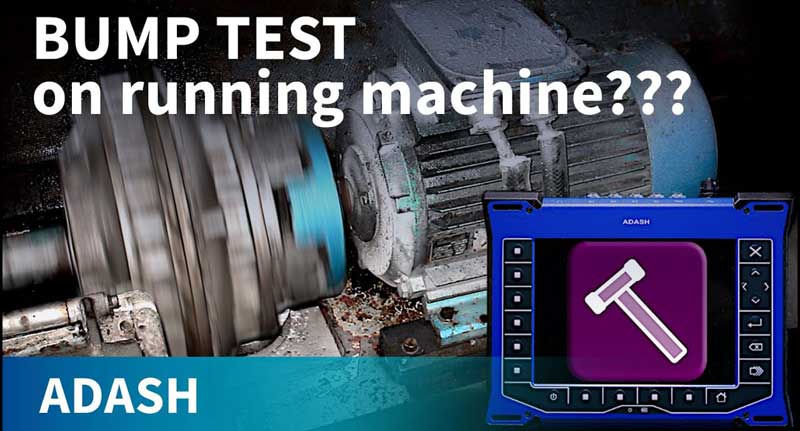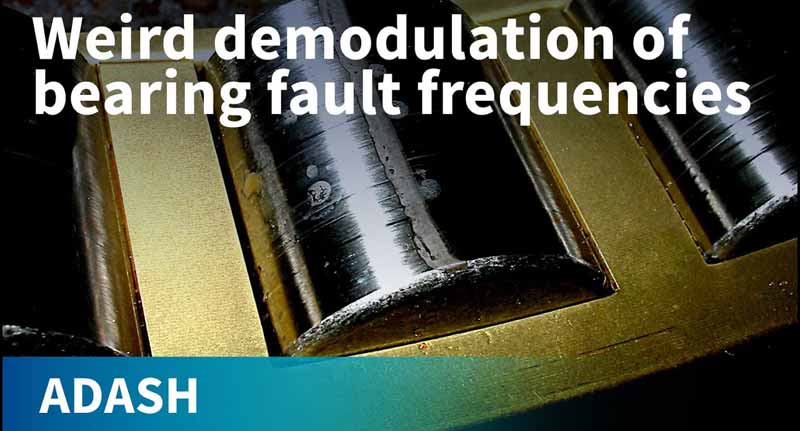A/D-Wandler - anleitungsvideos
10.08.2020
Dieses Video soll die Unterschiede zwischen 16-Bit- und 24-Bit-Analog-Digital-Wandlern (A/D) erklären.
Zunächst werde ich ein wenig Hintergrundwissen vermitteln. Wir müssen analoge Signale in digitale umwandeln. Wir müssen die Samples lesen. Sie können sich das wie ein Voltmeter vorstellen, das sich durch das Signal bewegt. Jetzt können wir das umgekehrte Verfahren anwenden und das Signal zeichnen. Die andere Frage ist, wie oft das Voltmeter die Werte liest. Die Genauigkeit wird durch den Analog-Digital-Wandlerchip bestimmt. Chips können verschiedene Bitzahlen haben.
Jeder A/D-Wandler hat einen Spannungsbereich, in dem er arbeiten kann. Beispiel: Wir verwenden den Wandler mit einem Bereich von plus minus zwölf Volt. Wenn die Sensorempfindlichkeit 100 mVs pro g beträgt, können wir mit einem Beschleunigungsbereich von plus minus 120 g arbeiten. Wenn die höhere Amplitude auftritt, wird sie auf den Maximalwert umgewandelt. Beispiel: 150 g werden in 120 g umgewandelt.
Jetzt stellen wir den Schlüsselfaktor jedes Konverters vor. Es ist die Auflösung. Die Auflösung ist eine Zahl und definiert so etwas wie Streifen innerhalb des Messbereichs. Tatsächlich ist die Auflösung die Anzahl der Streifen.
Die Auflösung wird in Bits definiert, nicht in Dezimalzahlen. Beispiel: Ein Konverter mit 16 Streifen ist vom Typ 4 Bit. Die höchste digitale Zahl bei 4 Bit ist 1111. Das bedeutet, dass wir 16 Streifen von null bis 15 erhalten. Jedes nächste Bit multipliziert die Auflösung mit der Zahl 2. 5 Bit ergibt 32, 6 Bit ergibt 64, 7 Bit ergibt 128 und 8 Bit ergibt 256.
16-Bit-Konverter arbeiten mit mehr als plus 32.000 Stufen und minus 32.000 Stufen. Zusammen mehr als 65.000 Stufen. 24-Bit-Konverter waren ein riesiger Schritt nach vorne. Es funktioniert mit mehr als 16 Millionen Pegeln. Was sind die Konsequenzen in der Praxis?
Wir haben über den Spannungsbereich plus minus 12 Volt gesprochen, der es ermöglicht, 120 g Spitzenwert zu messen. Die Sensorempfindlichkeit beträgt 100 mV/g. Wenn wir den Sensor mit 10 mV/g Empfindlichkeit verwenden, können wir 1200 g Spitzenwert messen. Der Bereich plus minus 12 Volt scheint also optimal zu sein. Wenn wir zum 8-Bit-Konverter zurückkehren, haben wir einen Bereich plus und minus 128 Pegel.
Wie groß ist die Streifenbreite? Sie beträgt 93 mV. Das ist fast 1 g. Das ist zu viel. Das bedeutet, dass alles zwischen null und 1 g auf einen Streifen fällt. Alles zwischen 1 und 2 g fällt auf den nächsten Streifen. Es ist klar, dass 8 Bit für den gesamten Bereich von +/-12 V nicht die Lösung sind.
Reicht ein 16-Bit-Konverter aus? Die Antwort ist: Nein.
Die normalen Signale können in der Praxis nur einige mV haben und wir müssen sie messen. Das bedeutet, dass wir nur mit 10 oder 20 der niedrigsten verfügbaren 32.000 Pegel arbeiten würden. Stellen Sie sich eine Skala von 32 Metern Länge vor. Und Sie verwenden nur die ersten 20 Millimeter zur Messung. Das ist nicht gut. Sie brauchen eine bessere Skala.
Um das Jahr 2000 herum waren hauptsächlich 16-Bit-Konverter verfügbar, sodass die Analysatoren diese verwenden mussten. Sie konnten sie jedoch nicht für den gesamten Voltbereich verwenden. Die Signale mit niedrigem Pegel mussten zuerst verstärkt und dann in eine digitale Form umgewandelt werden.
Wenn wir eine 16-Bit-Auflösung für den gesamten Bereich von +/-12 V verwenden würden, wäre der Schritt 0,3 mV. Das Signal wäre verzerrt.
Wie wird das in der Praxis gemacht? Nachdem wir mit der Messung begonnen haben, muss zuerst die Verstärkung ermittelt werden. Der Autogaining-Vorgang wird gestartet. Der Analysator misst den Spitzenwert des Signals und stellt die richtige Verstärkung ein. Nun beginnt die Messung. Es scheint alles in Ordnung zu sein. Aber nein, das ist es nicht. Das erste, aber nicht das Hauptproblem ist die verlorene Zeit. Bei langsam laufenden Maschinen kann die automatische Verstärkung für einen Punkt 10 Sekunden dauern. Das bedeutet eine Minute für Maschinen mit 6 Punkten und 1 Stunde für 60 Maschinen. Wenn Sie Hunderte von Maschinen messen müssen, ist das eine erhebliche Zeitverschwendung. Aber das Hauptproblem ist ein anderes.
Wenn die automatische Verstärkung den Teil des Signals mit niedrigem Pegel ohne Stöße verwendet, wird die falsche Verstärkung eingestellt. Wenn der Stoß dann während der Messung auftritt, ist der Bereich überlastet. Die Messung wird in diesem Fall entweder gestoppt oder nicht, enthält dann aber überlastete falsche Proben.
Alle genannten Probleme treten nicht auf, wenn Sie einen 24-Bit-Konverter verwenden. Der Pegel oder die Streifenbreite beträgt 1,4 Mikrovolt. Wenn wir ein Signal mit 1,4 mV Peak haben, muss der Konverter keine Verstärkung vornehmen, da 1000 Pegel für die Konvertierung verwendet werden. Und das ist das Hauptziel, der 24-Bit-Konverter arbeitet immer im vollen Bereich.
Sie können diesen Test für jeden Analysator verwenden. Legen Sie den Sensor auf eine weiche Unterlage und führen Sie die Messung durch. Nach der automatischen Verstärkung nehmen Sie den Sensor und klopfen ihn auf den Tisch. Es dürfen keine Warnungen oder Fehler angezeigt werden. Die Messung muss ohne Überlastungsprobleme fortgesetzt werden.
Möchten Sie einen neuen Analysator kaufen? Achten Sie darauf, wie viele Bits der A/D-Konverter verwendet. Wenn weniger als 24 Bits vorhanden sind, ist der Kauf nicht zu empfehlen.





